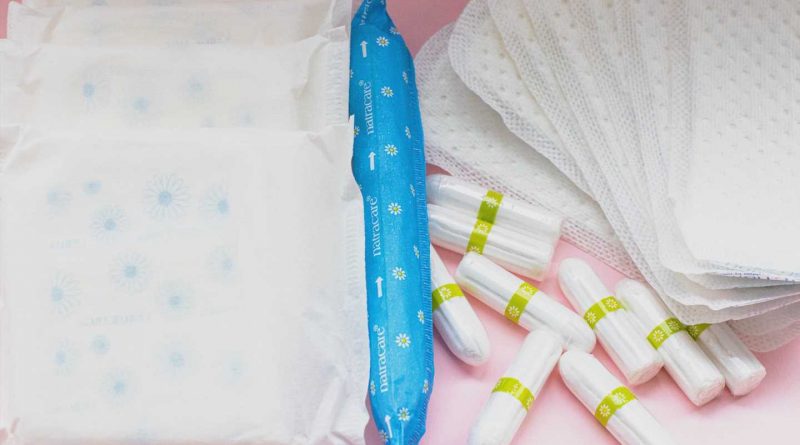Huge numbers of young women not seeking medical assistance for regular period pain, Australian study finds

Conversations about the impact of menstrual health on women’s lives are in the headlines with calls for menstrual health leave for working women, and it’s not just working women being impacted
Appearing in Curriculum Studies in Health and Physical Education, a recent study of young women between the ages of 13–25 has shown that although menstrual health literacy is part of the Australian curriculum, many young women in Australia are looking to the internet for answers due to the inadequacy and lack of timely information available in schools.
Previous research has found that period pain (dysmenorrhea), typically associated with abdominal cramping, back pain, nausea, fatigue and emotional changes, affects just under three quarters of young women worldwide.
Although menstrual health literacy is part of the Australian curriculum, research has found many young women in Australia are looking to the internet for answers due to the inadequacy and lack of timely information available in schools.
Lead author Dr. Christina Curry from Western Sydney University’s School of Education said: “Period pain can have a negative impact on everyday tasks, including education. When untreated, it can interfere with educational performance and engagement and lead to absence from educational, sporting, extra-curricular and workplace activities.”
Research to be published in a peer-reviewed article today reports on the findings of a survey of 5,007 young Australian women aged 13–25 on their experiences of menstruation, dysmenorrhea and education.
The article entitled, Menstrual Health Education in Australian Schools by Western Sydney University researchers, Dr. Christina Curry, Associate Professor Tania Ferfolja, Professor Kathryn Holmes, Dr. Kelly Parry, Sherry, and Dr. Mike Armour, builds on their team’s previous research suggesting young women may be disadvantaged in school and, by extension, in terms of life opportunity due to the impact of period pain and other menstrual symptoms.
According to Dr. Curry, “Although educational content related to menstruation is indirectly incorporated in the Australian Health and Physical Education curriculum it does not directly mandate to teach menstrual health, therefore it may not be specifically taught and, if it is, the knowledge by the teacher may be limited.”
“When asked ‘What was the most useful information about menstruation received in HPE [Health and Physical Education classes] class?’ 187 (6.9%) reported that either ‘no information’ about menstruation was provided to them during their schooling or they were ‘unsure’ about whether any information was provided at all. It is this combination of factors that challenge curriculum implementation of menstrual health education.”
Associate Professor Ferfolja explains, “Many teachers lack training and confidence to facilitate contemporary relationships and sexuality education. The complexities and discomfort around the topic appear to have an influence on the topic not being taught at all, with some teachers avoiding it altogether. This is the result of not having a good understanding of the topic beyond the biological”
A leading researcher in menstrual health, Dr. Armour from Western Sydney University’s NICM Health Research Institute, pointed out that “In Australia, around 90% of those under 25 report regular period pain but less than half of those seek medical assistance. This reluctance to access medical assistance is frequently due to an underlying culture positioning period-related pain as a ‘normal’ part of the menstrual cycle and as something to be tolerated—this seems to be common across geographical and cultural boundaries.”
According to respondents, “Nothing was really helpful due to the fact of learning the information too late. Learning about growth and development should happen in primary school, not year 8/9.” (15 years of age, School student, Year 10, South Australia)
“There was no practical information focused on pain management related to menstrual management, such as relieving symptoms and the use of sanitary items, only the biological effect on the body such as how hormones come into play. Personally, that was not useful and I can’t remember much about it.” (16 years of age, Year 11, Victoria)
“We did not learn about hormones, possible complications (dysmenorrhea, endometriosis, etc.), what the baseline of a normal period was like. I assumed the pain, vomiting, and general unpleasantness caused by my endometriosis was normal.” (24 years of age, University student, Queensland)
Menstrual health education is required to be taught as part of the HPE curriculum and, according to the researchers, the topic needs to be taught and teachers need the support to teach it effectively and in a way that meets students’ needs.. The findings highlight the need for an effective professional development program for inservice teachers and for targeted education of preservice teachers.
As Professor Holmes pointed out: “To ensure the translation to curriculum practice, further advocacy is required so young people have the knowledge and skills to support their menstrual health and teachers feel well-equipped and confident to teach menstrual health education.”
Source: Read Full Article



